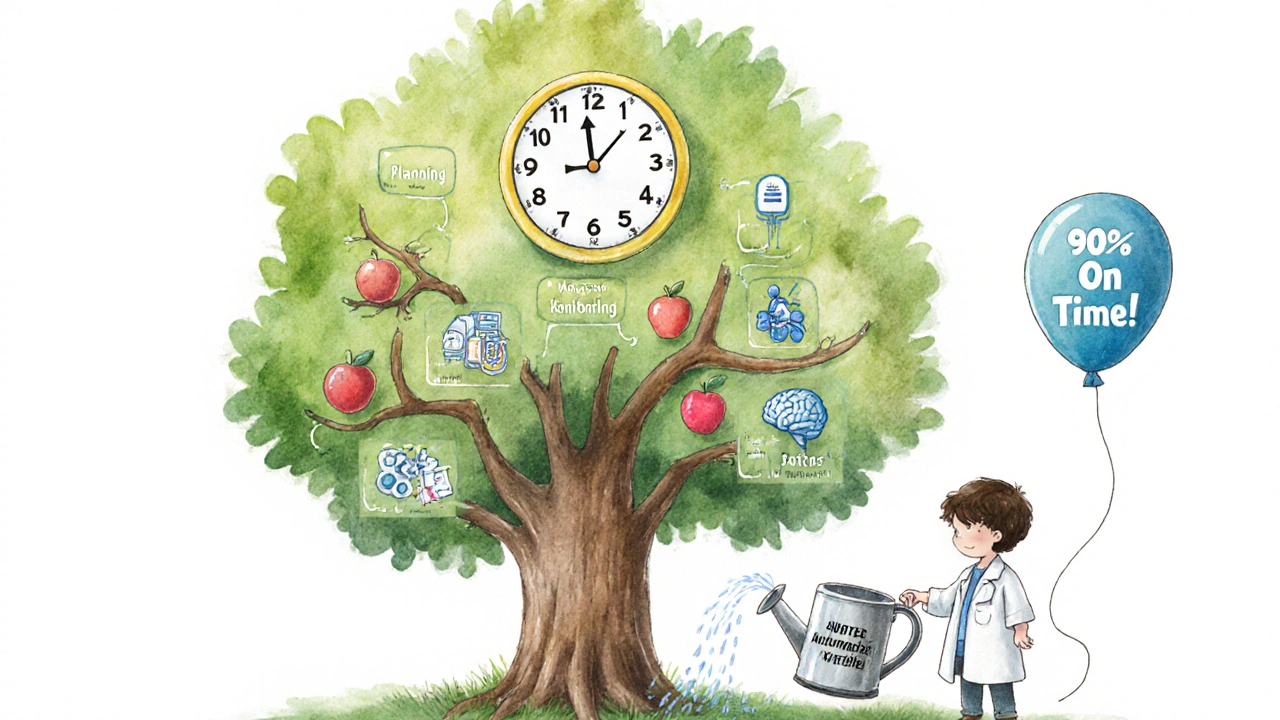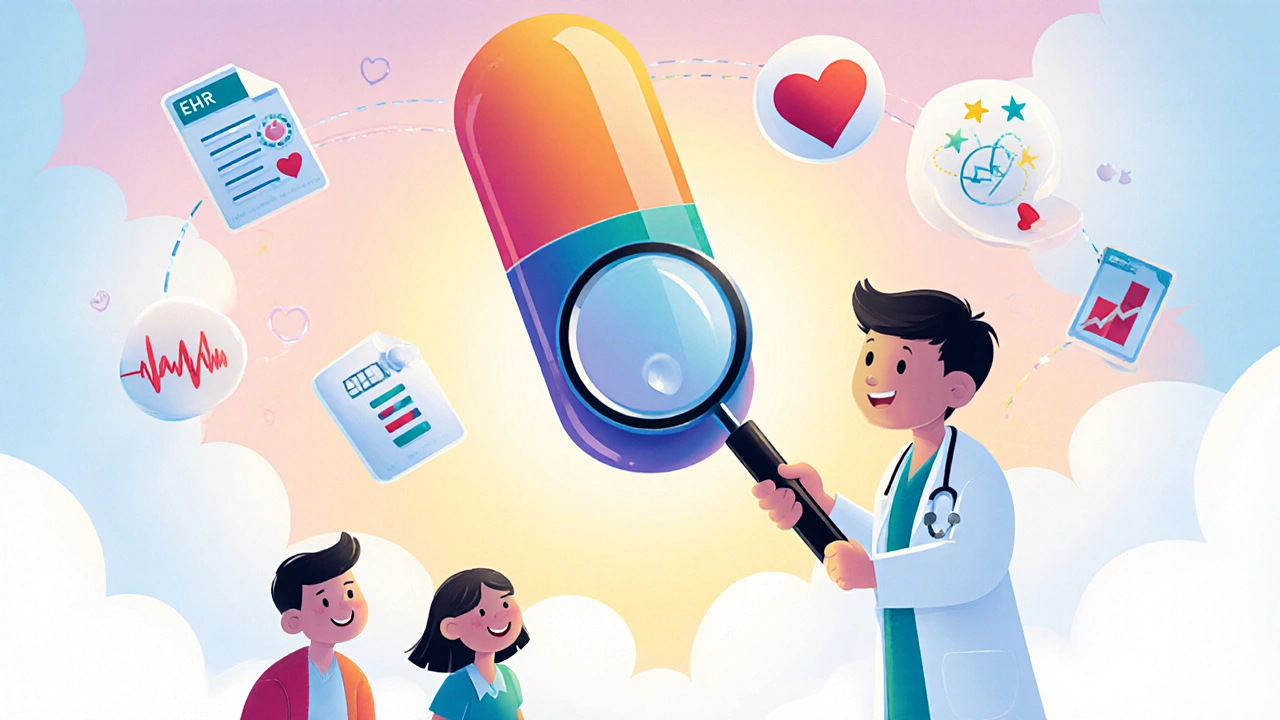Why Post-Marketing Drug Safety Tracking Matters
Drugs approved by the FDA aren’t tested on millions of people before they hit the market. Clinical trials usually involve under 5,000 patients - mostly healthy adults, with few older adults, pregnant women, or kids. That means rare side effects, long-term risks, or interactions with other meds often stay hidden until real people start using the drug daily. That’s where post-marketing studies come in. These aren’t optional extras. They’re legal requirements. And if you work in pharma, healthcare, or regulatory compliance, tracking them isn’t just good practice - it’s critical to patient safety.
Between 2018 and 2022, 87% of safety actions taken by the FDA - like updating warning labels or adding black box warnings - came from data collected after a drug was already being sold. Without proper tracking, a drug that seems safe in trials could quietly cause harm to thousands before anyone notices. The FDA’s own data shows that 28% of serious adverse reactions in older adults were never seen in clinical trials because those patients weren’t included.
The Three Phases of Post-Marketing Surveillance
Tracking post-marketing studies isn’t random. It follows a structured, regulated process. Here’s how it breaks down:
- Planning - Right after approval, drug companies must submit a Safety Surveillance Plan and a Risk Minimization Plan. These outline how they’ll collect data, who’ll report side effects, and what steps they’ll take if risks emerge - like special patient guides or restricted distribution.
- Monitoring and Reporting - This is where the real work happens. Companies run studies: observational databases, patient registries, and follow-up clinical trials. They also submit periodic safety reports to regulators every few months or years.
- Reevaluation - Between 4 and 10 years after launch, the drug must be reviewed again. Is it still safe? Does the benefit outweigh the risk? If not, the FDA can demand changes or pull the drug.
Missing any of these phases means non-compliance. And non-compliance can mean fines, delays in new drug approvals, or even forced recalls.
Key Tools Used to Track Drug Safety
Drug safety doesn’t rely on one system. It’s built on layers of data sources. Here are the main ones you need to know:
- FAERS (FDA Adverse Event Reporting System) - This is the largest public database of drug side effects, with over 30 million reports as of 2023. Anyone - doctors, patients, pharmacists - can submit a report. It’s the first place regulators look when a new safety concern pops up. But it’s passive: reports are voluntary, incomplete, and often lack details like lab results or exact dosages.
- Sentinel System - This is the FDA’s active surveillance engine. It pulls data from electronic health records and insurance claims across 300+ million Americans. Unlike FAERS, Sentinel can track real-world outcomes: Did patients on this drug have more heart attacks? Did they end up in the hospital more often? The system’s 2023 upgrade added EHR data from 24 million people, giving regulators access to lab values, vital signs, and diagnosis codes.
- Yellow Card (UK) and Canada Vigilance - These are country-specific systems. The UK’s Yellow Card received over 76,000 reports in 2022. Canada’s program got nearly 29,000. If you’re tracking global safety, you need to monitor these too.
Smart teams use all three: FAERS for early signals, Sentinel for confirmation, and international systems for broader context.

How to Set Up a Tracking System
If you’re responsible for managing post-marketing studies, here’s how to build a reliable tracking system:
- Centralize your data - Don’t rely on spreadsheets. Use a dedicated pharmacovigilance database that links study protocols, deadlines, regulatory correspondence, and safety reports in one place.
- Set automated alerts - Program reminders for key dates: submission deadlines, study milestones, and regulatory review windows. Missing a deadline can trigger FDA audits.
- Assign ownership - Every study needs a lead. The Drug Information Association recommends one pharmacovigilance specialist for every $500 million in annual sales of the drug. That’s not a suggestion - it’s a baseline for compliance.
- Track the PMSTI - The Post-Marketing Study Timeliness Index measures what percentage of studies are completed on time. In 2023, nearly 72% of FDA-mandated studies ran late, often by years. Your goal? Keep your PMSTI above 90%.
Teams that use automated tracking systems cut study initiation time from 14 months down to under 9 months. That’s not efficiency - that’s risk reduction.
Common Problems and How to Fix Them
Even the best systems run into roadblocks. Here are the top three issues and how to solve them:
- Problem: Patient recruitment is too slow - Many studies fail because they can’t find enough patients. Solution: Partner with hospital networks, use EHR filters to identify eligible patients, and offer incentives like free follow-up care.
- Problem: Data is siloed - If your safety data lives in one system, your clinical trial data in another, and your regulatory docs in a shared drive, you’re flying blind. Solution: Integrate systems using standardized data formats like the FDA’s Sentinel Common Data Model (SCDM+).
- Problem: False signals - FAERS is full of noise. A spike in reports might be due to media coverage, not a real risk. Solution: Use advanced analytics. The FDA now uses machine learning and Bayesian statistics to reduce false positives from 34% in 2018 to just 19% in 2023.
Don’t wait for regulators to catch you off guard. Proactively audit your tracking system every six months. Look for gaps in data, outdated protocols, or staff turnover that leaves studies unattended.

What’s Next: The Future of Drug Safety Tracking
The field is changing fast. Here’s what’s coming:
- SCDM+ (Sentinel Common Data Model Plus) - Launching in 2024, this will add genomic data to the Sentinel system. By 2026, it’ll cover 50 million patients with genetic, clinical, and claims data - letting regulators see if certain genes make patients more vulnerable to side effects.
- AI-Powered Signal Detection - The EU’s EudraVigilance system will use AI to scan reports for hidden patterns. Early pilots show it can find signals 40% faster than manual review.
- Global Data Sharing - The WHO is building a network of 100 countries to share adverse event data by 2027. This means a side effect spotted in Japan could trigger a global alert within days, not years.
Companies that adopt these tools early will not only stay compliant - they’ll gain a competitive edge. Faster detection means faster responses, fewer lawsuits, and stronger trust from prescribers and patients.
Final Checklist for Tracking Post-Marketing Studies
Use this as your monthly audit tool:
- ✅ All mandated studies are listed with deadlines in your central system
- ✅ Automated alerts are active for upcoming submissions
- ✅ Pharmacovigilance team has clear roles and enough staff
- ✅ FAERS and Sentinel data are reviewed at least quarterly
- ✅ PMSTI is above 90%
- ✅ EHR and insurance data are integrated where possible
- ✅ Staff are trained on new tools like AI signal detection
If you’re checking off every item, you’re doing better than most. If not, start with one item - fix it. Then move to the next. Drug safety isn’t about perfection. It’s about consistent, deliberate action.
What’s the difference between FAERS and Sentinel?
FAERS is a passive database where anyone can report side effects - doctors, patients, or manufacturers. It’s great for spotting early signals but lacks clinical detail. Sentinel is an active system that pulls data from electronic health records and insurance claims across 300 million people. It can track real outcomes like hospital visits or lab changes, but it doesn’t capture every patient interaction. Use FAERS for initial alerts, Sentinel for confirmation.
How long do post-marketing studies usually take to complete?
The FDA typically requires studies to be finished within 3 years. But in reality, 72% of studies between 2015 and 2022 took over 5 years to complete. Delays happen because of slow patient enrollment, data access issues, or lack of staff. Companies that use distributed data networks and automated recruitment cut this time in half.
Can patients report side effects themselves?
Yes. Anyone can submit a report to FAERS through the FDA’s website or by calling 1-800-FDA-1088. In fact, over 40% of FAERS reports come from patients or caregivers. These reports often describe symptoms doctors miss - like fatigue, mood changes, or sleep issues. Encourage your patients to report if they notice something unusual.
What happens if a drug company misses a post-marketing study deadline?
Missing a deadline triggers FDA enforcement. This can include warning letters, fines, delays in approving new indications for the drug, or even restrictions on distribution. In extreme cases, the FDA can require a Risk Evaluation and Mitigation Strategy (REMS) or pull the drug from the market. It’s not just a paperwork issue - it’s a patient safety issue.
Are AI tools reliable for detecting drug safety signals?
AI tools like those tested by the FDA and Lifebit AI can improve signal detection by 42% when analyzing unstructured EHR data. But they also generate 23% more false positives than traditional methods. That means they’re great for flagging potential issues - but human experts still need to review every alert. AI is a filter, not a replacement.
Do all drugs need post-marketing studies?
Not all - but most. The 21st Century Cures Act requires post-marketing studies for high-risk drugs, especially in oncology, neurology, and immunology. About 37% more of these studies were mandated between 2017 and 2022. Even if not required, smart companies run them anyway to catch problems early and protect their reputation.
What to Do Next
If you’re responsible for drug safety tracking, start here:
- Map out every post-marketing study your team is managing. List deadlines, responsible people, and data sources.
- Check if your system can auto-alert you 60 days before a deadline. If not, build it.
- Run a quick audit: Are you using FAERS and Sentinel? Are you reviewing them quarterly?
- Train your team on the new tools - especially AI-assisted signal detection.
Drug safety isn’t a project with an end date. It’s a continuous process. The sooner you treat it like one, the safer your patients will be - and the less likely you are to get caught off guard by a safety crisis.

